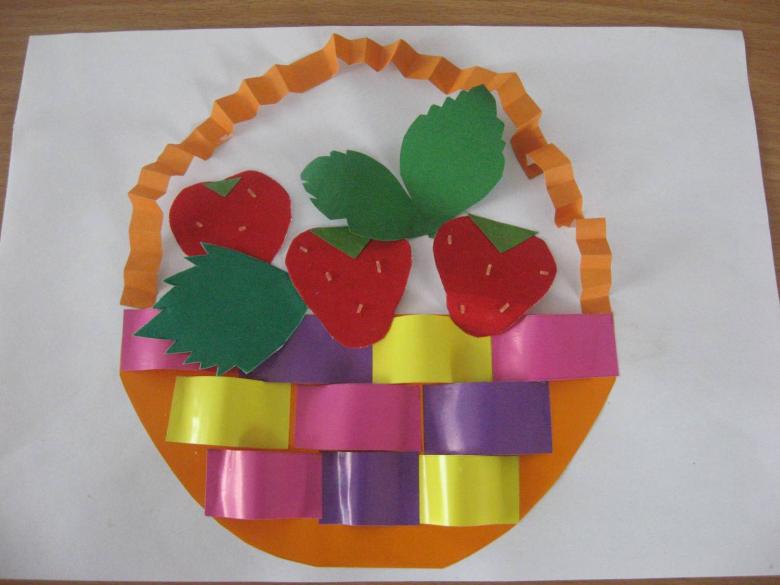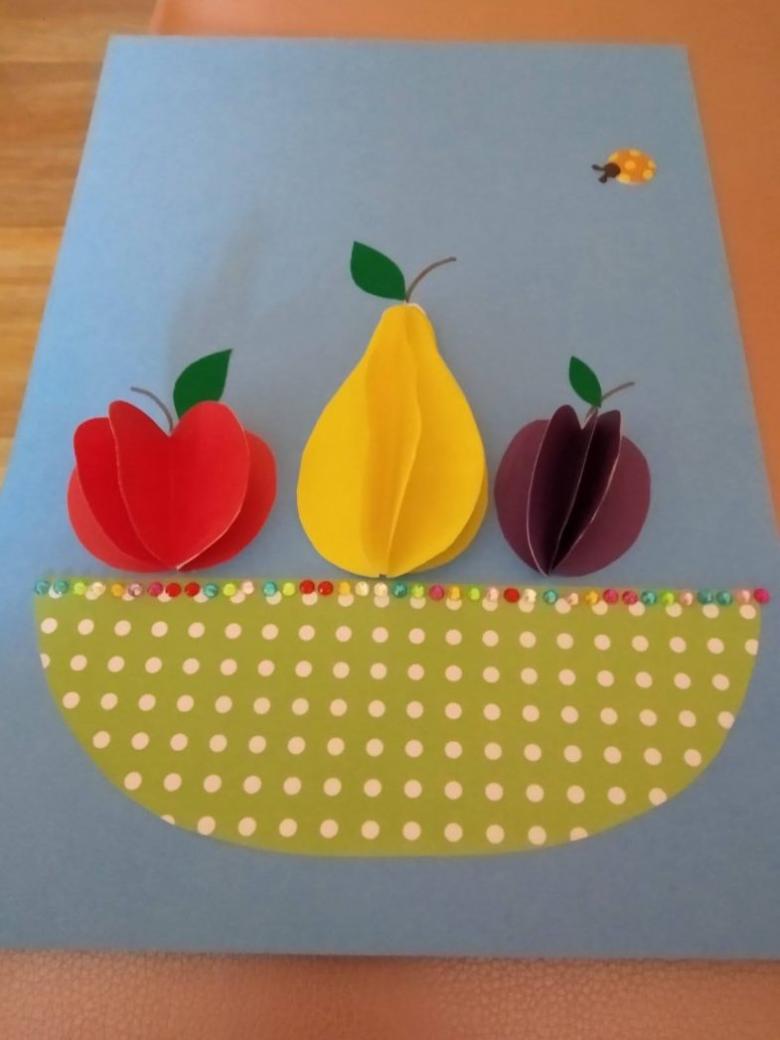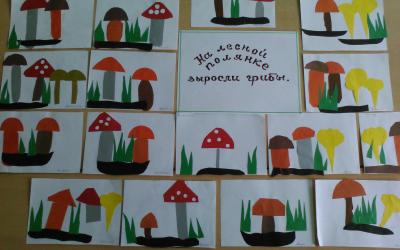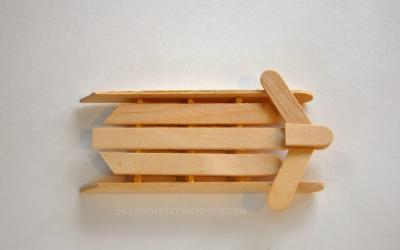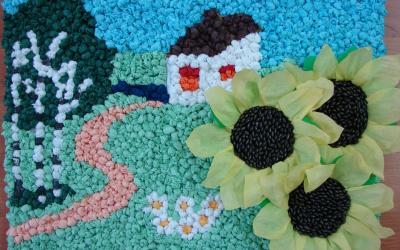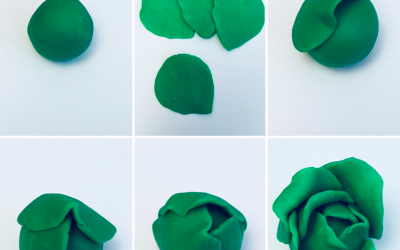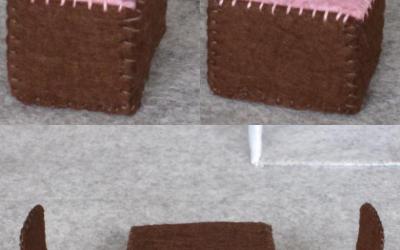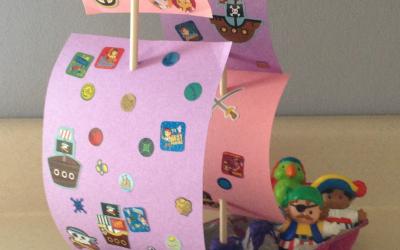Applications of fruits and vegetables for children of different ages by step-by-step instructions (85 photos)
Applique is one of the popular and fascinating types of crafts, which you can start doing at a very young age. With applique you can depict any object, the main thing is to use your imagination.

The positive aspects of creating applique
This type of crafts is very beneficial for the development of the child. The main advantages of creating applications:
- Development of fine motor skills of the hands;
- Development of creative and logical thinking;
- This trains assiduity and neatness;
- While working, your child remembers how objects look and are called.

Also, a child can create in this way not just a standard handicraft, but also present the work as a gift or decoration for the interior.

Fruit and vegetable applications
Applications in the form of fruits and vegetables are quite popular, they are created by children of both younger and older age. With their help, you can glue real compositions, and with different materials.

The image of fruits and vegetables in the technique of applique promotes the rapid study of them and memorization, which is very important for a young child.

Materials for making them
For the manufacture of applications depicting fruits and berries, you can use not only the usual material - colored paper, but also others:
- corrugated paper;
- felt;
- some kinds of fabrics;
- Dried leaves of trees and berries;
- seeds;
- cereals and pasta;
- beads;
- eggshells;
- thread.
Quite interesting and original applique on the subject turns out with several kinds of materials.

Techniques
As a rule, depict fruits and vegetables in the form of standard applications, but also very interesting look in 3-d volume. If you wish, you can make an application using origami or by twisting narrow strips of paper.
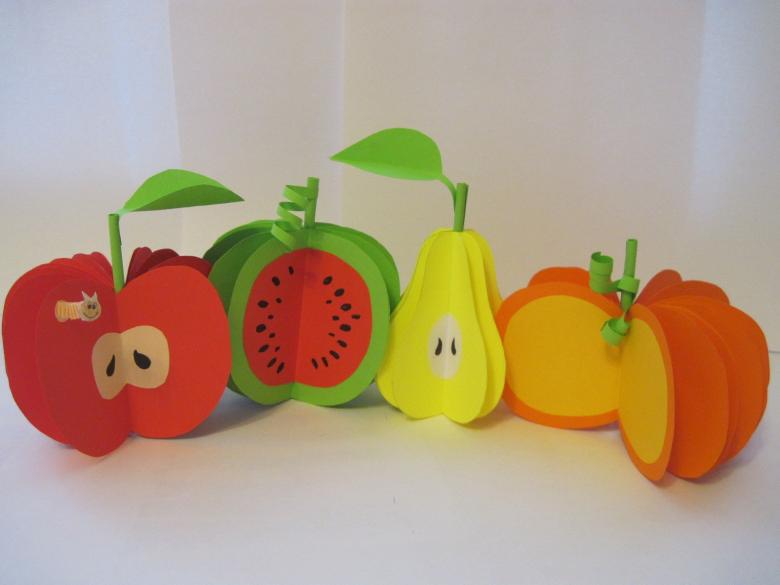
Also often make work in the technique - a mosaic, that is, tear the paper or break the eggshell into small pieces, and then fill them with the desired image.
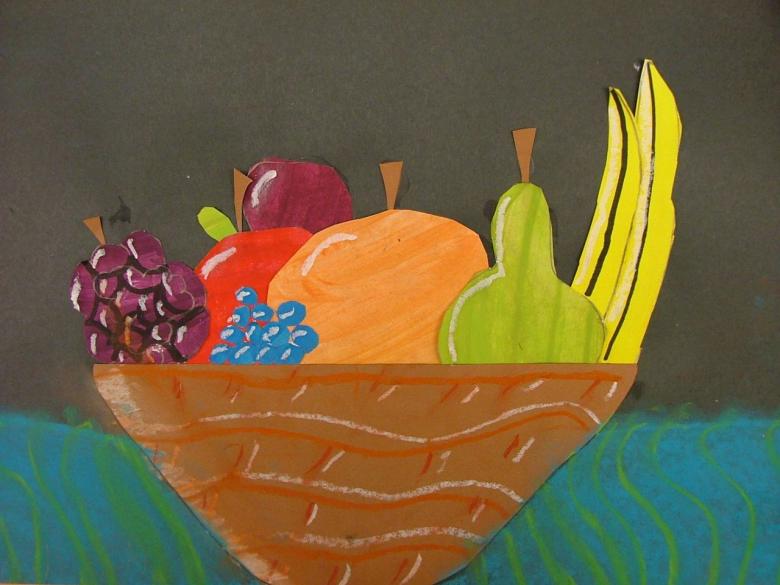
For the youngest children
The first applications can begin to do about 2 years, you just have to choose the easiest and simplest options. As a rule, applications of fruits and vegetables in kindergarten or nursery school are made in the form of a single work, and not a composition.

In this way it is easier for children to glue them, as well as to remember. To make it as easy as possible for a child, you can use already prepared templates of fruits and vegetables for applique.

Cherry
A cherry tree is a great option for application to the youngest children on this theme. To make it you will need:
- a white sheet of cardboard;
- a pencil;
- scissors;
- glue;
- colored felt-tip pens;
- red colored paper.

Work plan:
- Draw 2 small circles on colored paper, cut them out.
- Glue the circles to the cardboard, so that they are at the same level and not far from each other.
- Using a brown felt-tip pen, draw 2 lines joining the circles to make a picture in the form of a pair of cherries.
- Doodle the leaf with green felt-tip pen.

Pineapple
This exotic fruit is liked by almost every child, and of course it evokes a desire to depict it. For a more beautiful and interesting form, you can make it three-dimensional of plain colored paper. All you need for this handicraft:
- yellow, green paper;
- sheet of cardboard;
- glue;
- scissors;
- pencil.

Step by step work plan:
- On a sheet of cardboard, draw a pineapple.
- Cut the yellow paper into strips, about 5 cm long, 1.5-2 cm wide.
- Take one strip and staple its ends to form a ring, glue the ends.
- A small part of the ring slightly press and glue to the upper contour of the pineapple.
- Near glue another ring, and so fill in the entire top row.
- Take a ring of paper and also glue, but just below the top row of pineapple, with the glued part should be under the free edge of the upper rings.
- Follow the previous point until the entire pineapple is filled.
- From green paper, cut small long leaves and glue them to the top of the pineapple.
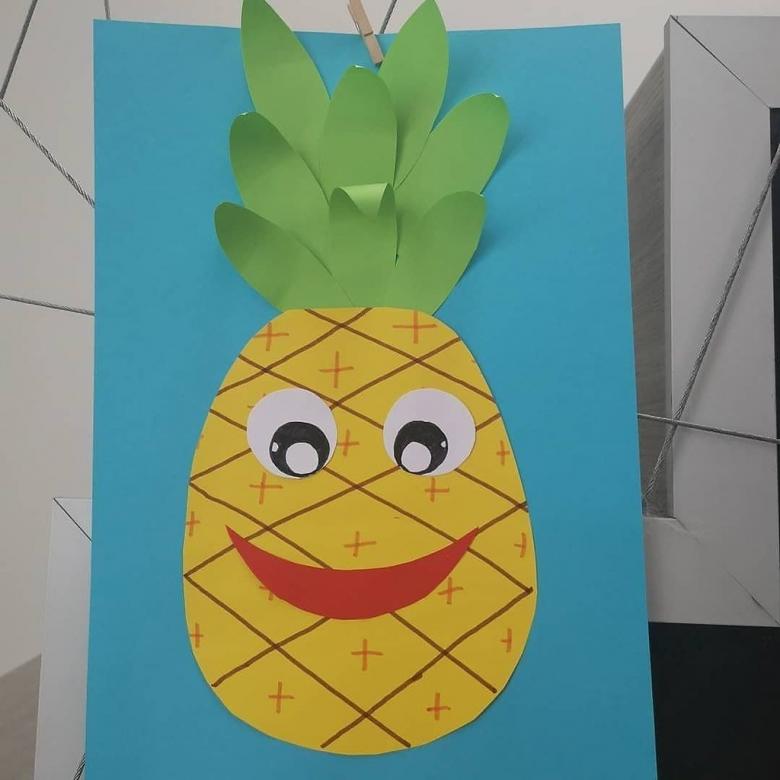
For older children
Applique vegetables and fruits in the older group are most often made volumetric and using not only paper. At this age, children can choose different materials for this work and even combine them with each other, supplementing them with different elements.

Pear
There is one interesting way to create volumetric applications, and to depict in this way a pear can be very beautiful and neat in appearance. For this purpose it is necessary to prepare:
- double-sided paper of yellow and green color;
- glue;
- scissors;
- pencil;
- Black felt-tip pen.

Step-by-step plan of the pear-shaped applique:
- On a sheet of yellow, draw a pear, cut it out.
- Fold the pear in half.
- Using this template to make a total of 16 of these blanks.
- Halves of pears to glue together, the side parts, to go volumetric fruit.
- One of the parts of pears a bit straightened and a black marker in it draw a couple of seeds.
- From the green paper to cut a small leaf with a tail and glue to the top of a pear.

Orchard
Making a composition of vegetables is a great option for applique with several types of material. This work requires the preparation of:
- a sheet of cardboard;
- gouache paints with a brush;
- glue;
- rice, buckwheat;
- pumpkin seeds;
- pencil.

Plan for creating a vegetable composition:
- On a sheet of cardboard, draw: potato, carrot, pumpkin, beet, cucumber, tomato...
- Lay out the pumpkin seeds, tightly pressed together and well glued.
- Cucumber and carrot smear with glue and fill with rice.
- Lay out the remaining vegetables with buckwheat and glue it on.
- Paint all the workpieces, choosing the right color.
- Doris carrot and beet tops, pumpkin tail.

Basket of fruits
Quite an interesting way to create a fruit applique from felt. This material is sold in a wide range of colors and it is easy to work with. Also for such a craft we will need: a sheet of cardboard, brown paper, scissors, a glue gun and rods for it, a pencil, newspaper.

Plan of action.
- Draw a basket on a sheet of cardboard.
- Cut sheets of paper into strips about 2 cm wide and roll them into thin tubes, glue the edges well.
- Lay out the outline of the basket from the newspaper tubes, cutting them to the right size.
- Tear the brown paper into small pieces and roll them into tight balls.
- Glue the balls all over the basket so that there is no gap between them.
- From the felt cut out the desired fruit, attach them to the basket in a satisfactory order and glue.

In principle, for such a three-dimensional application of fruits and vegetables you can use seeds and cereals, as well as eggshells.

Fruit and berry applications allow you to create colorful works from a variety of materials and in different techniques. Even the youngest creative hands can begin their acquaintance with applications with vegetables, berries, fruits, and older children - to create entire compositions.






